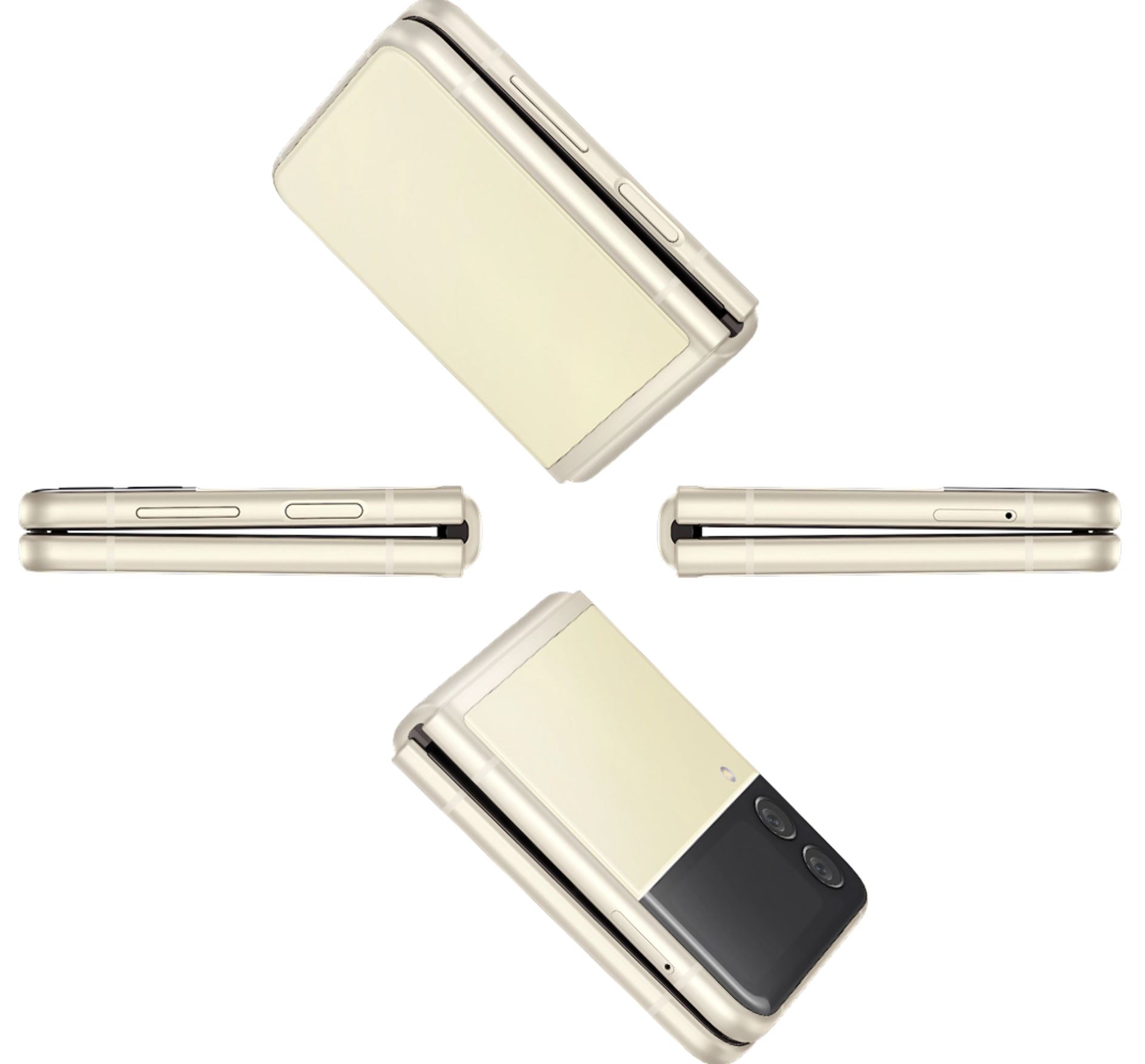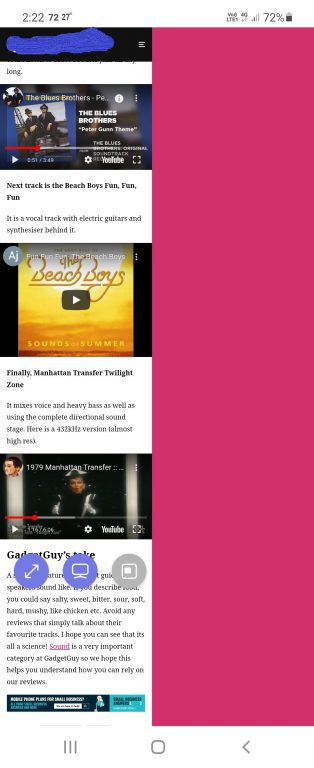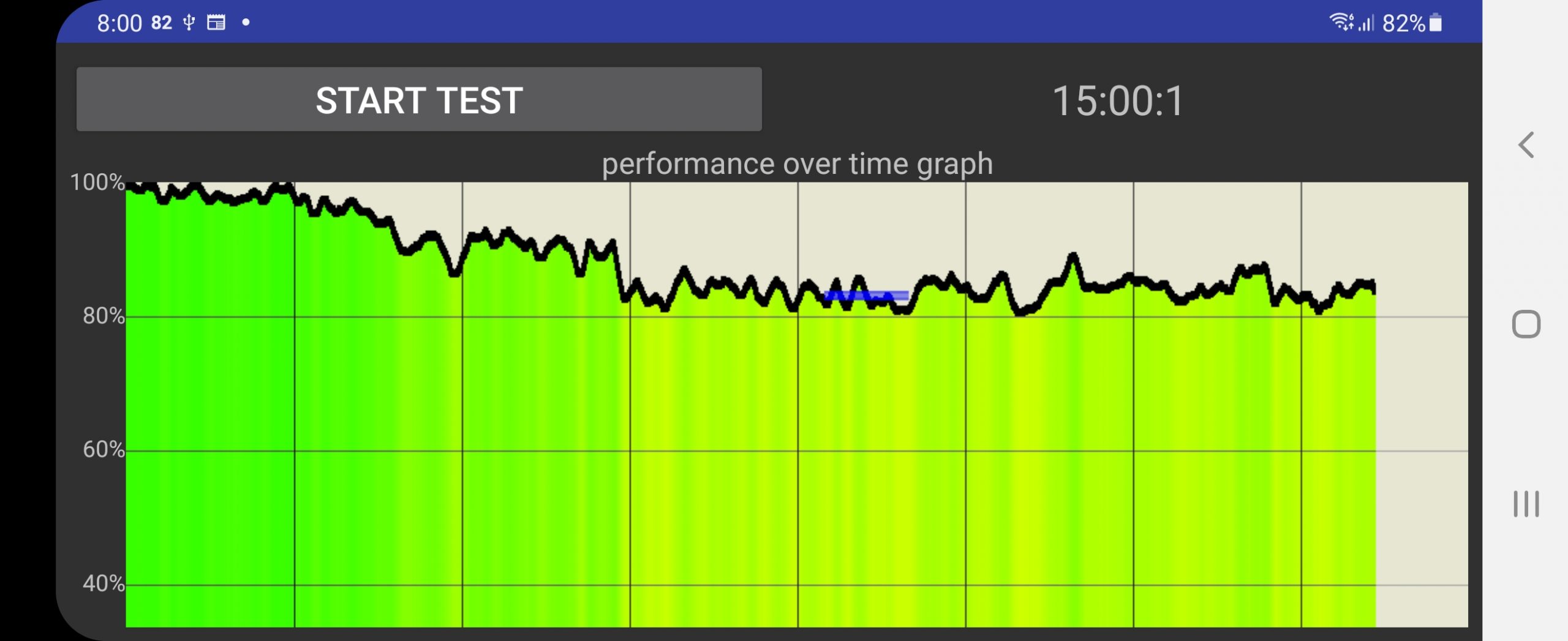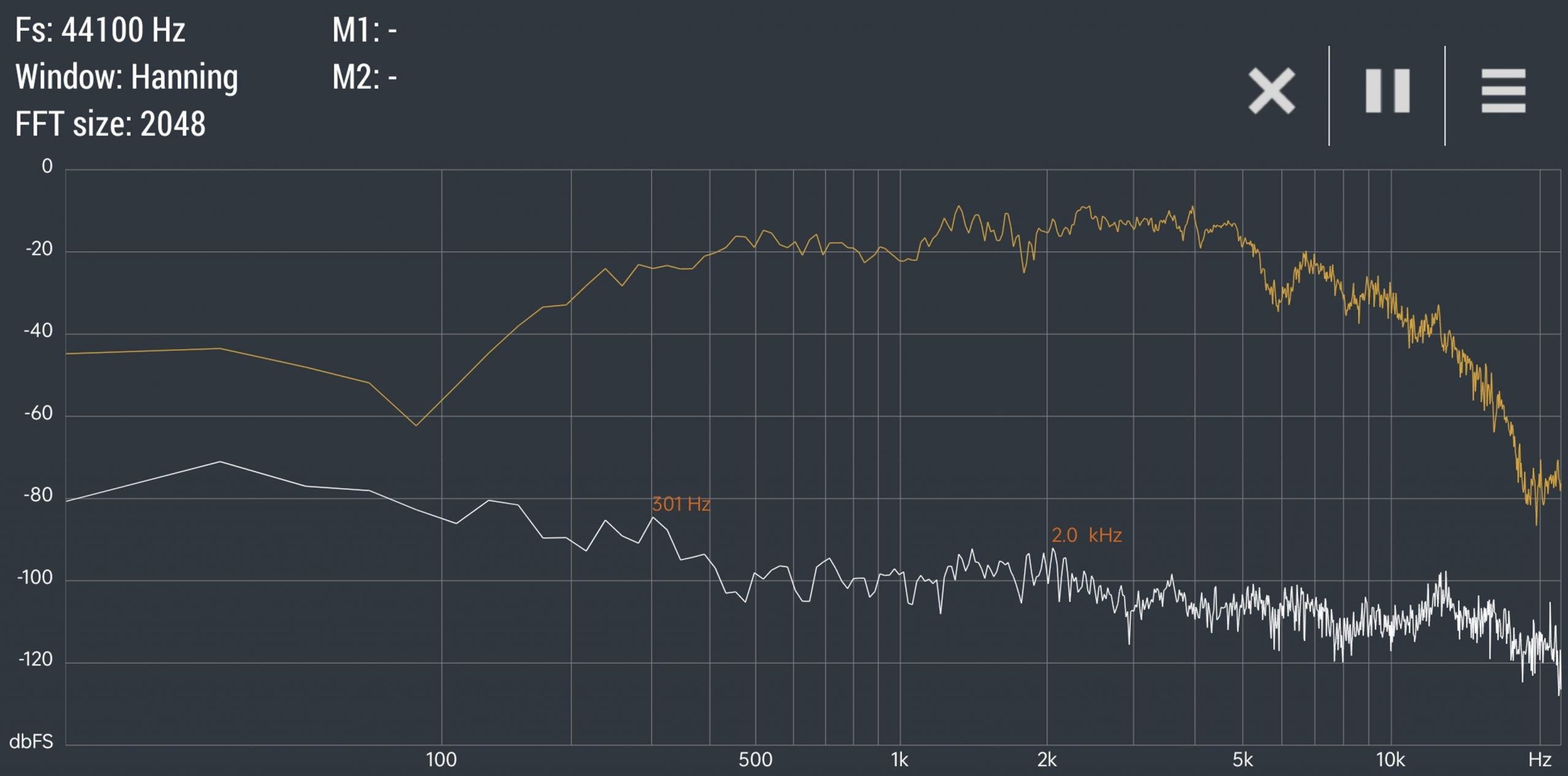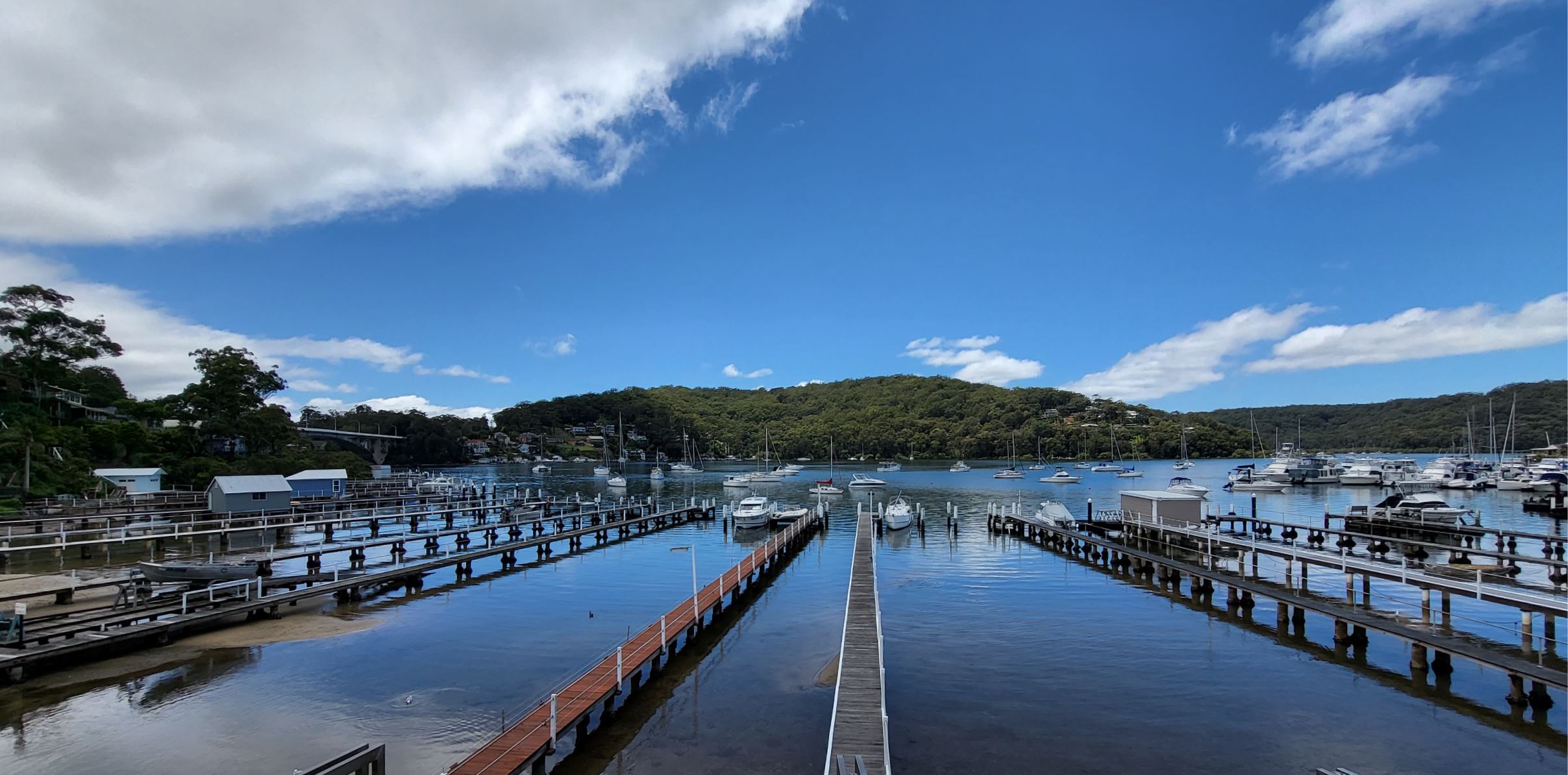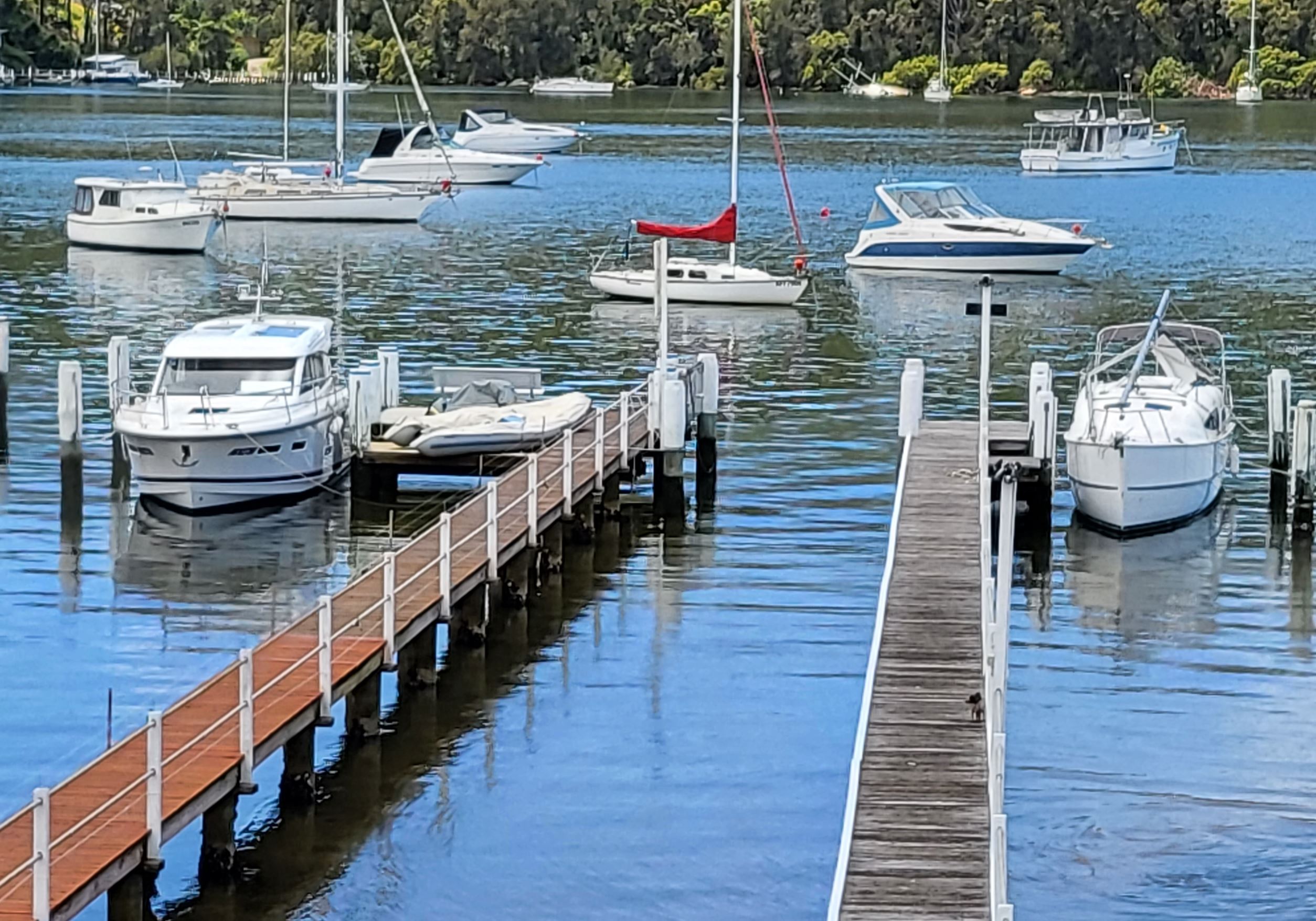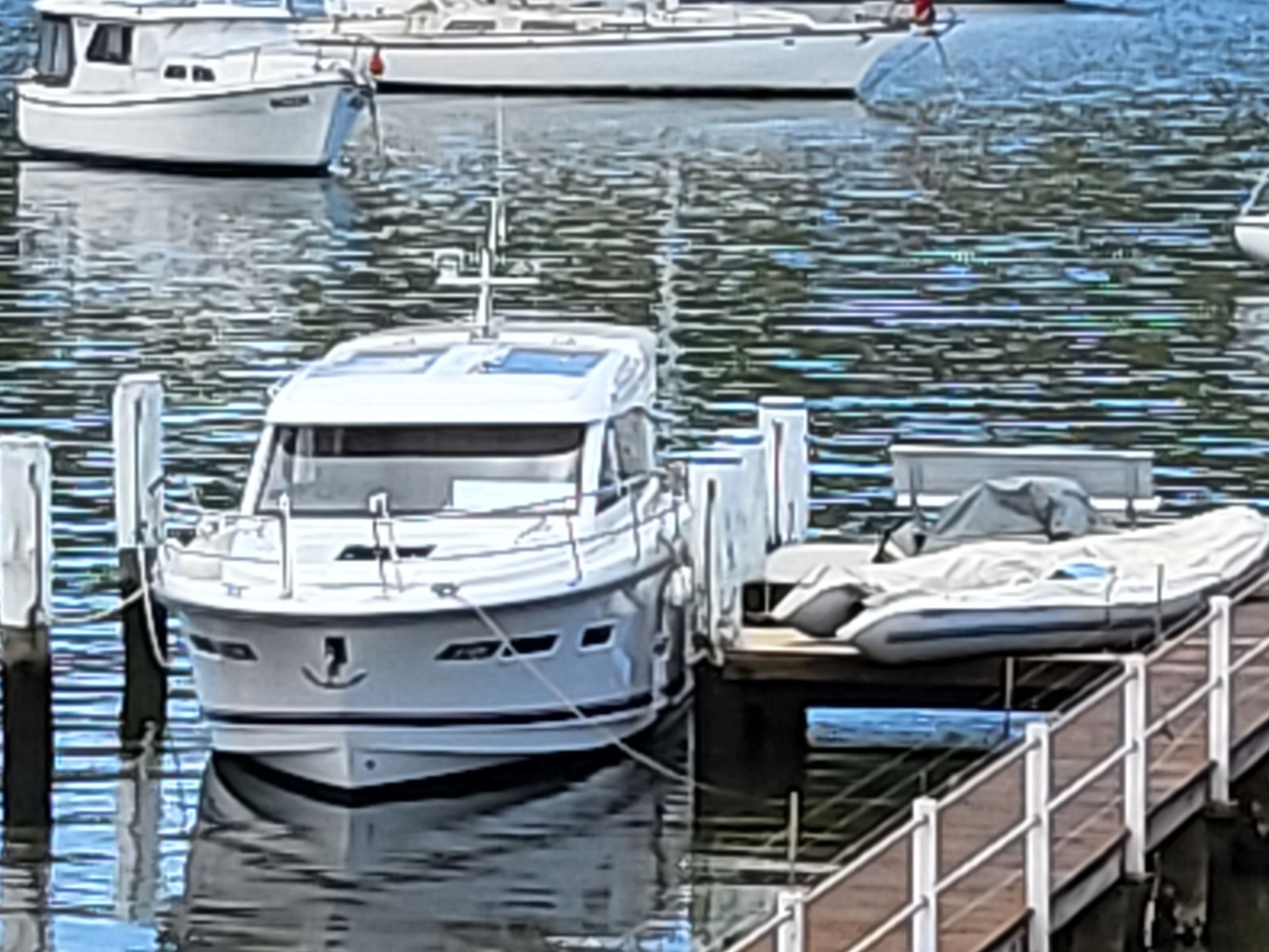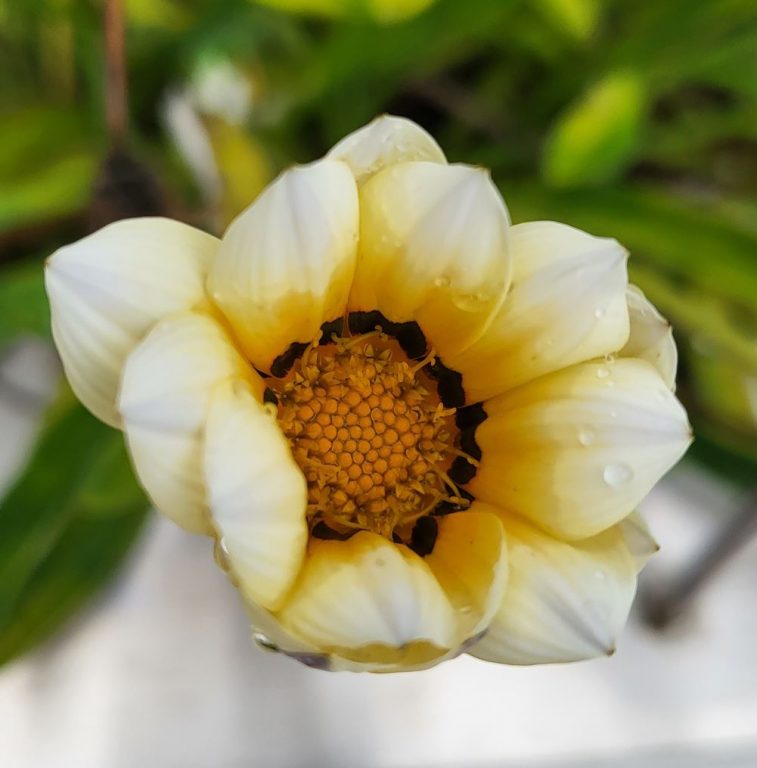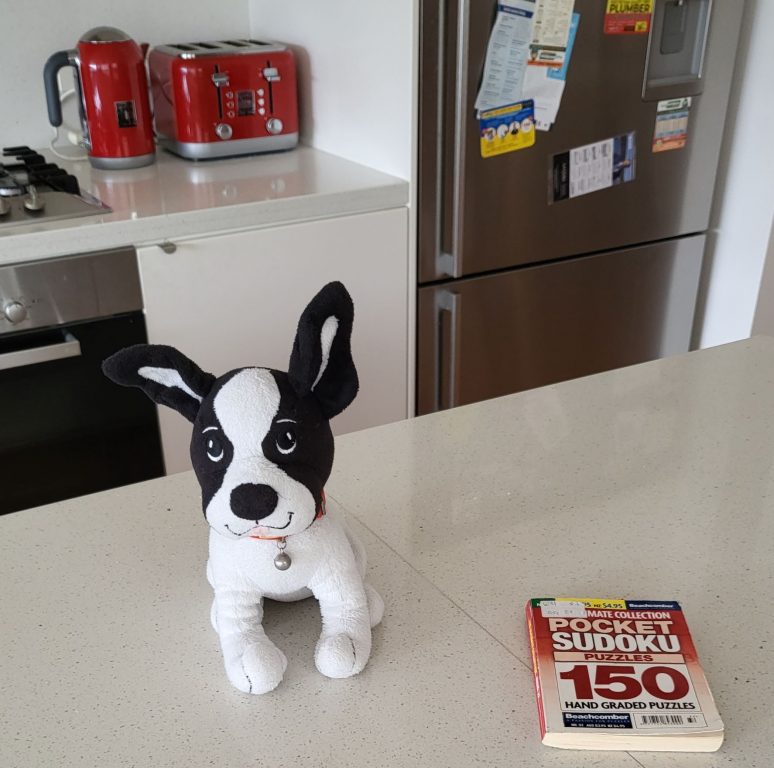Samsung Galaxy Z Flip3 5G is no flop (review and DXOMark Camera mark update)
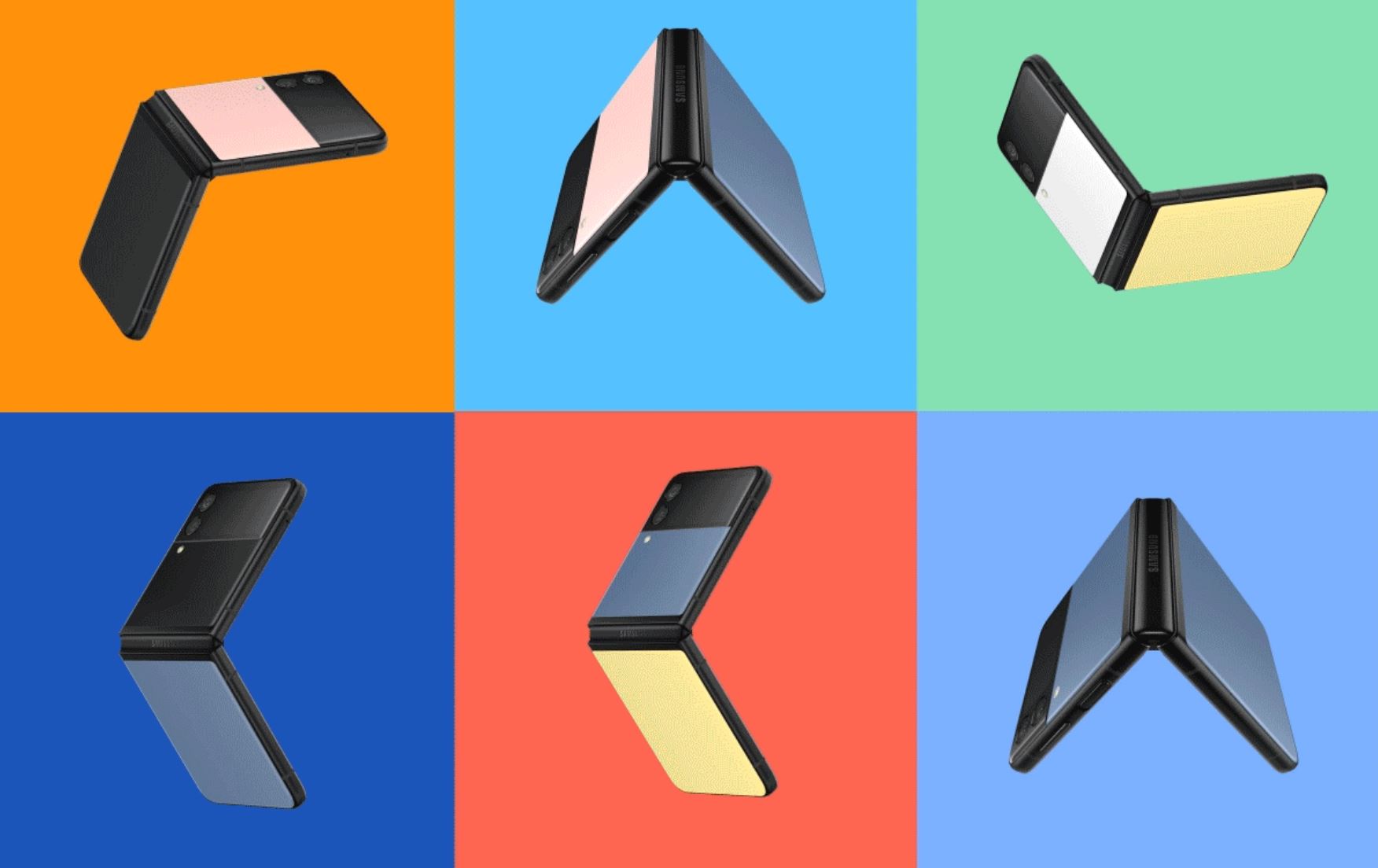
The Samsung Galaxy Z Flip3 5G is pretty well the pinnacle of perfection for a flip phone. One that is eminently usable, pocketable, and has decent specs.
At its heart is the 2021 Qualcomm SD888 flagship 5nm processor, X60 3/4/5G modem, Adreno 660 GPU, and all the go-fast bits – very similar to the Galaxy Z Fold3.
There are few minor compromises, more to match a foldable frame weighing 183g.
What is the future of foldables?
Foldables like the Samsung Galaxy Z Flip3 or the Samsung Galaxy Z Fold3 are the next iteration of the mobile phone ‘glass slab’. Screen technology advances enable them to offer a more pocketable device or more screen space. But they serve the very same purpose as a traditional glass slab smartphone.
Their increased cost is due to the new foldable screen technology and lack of economy of scale – global sales will account for a fraction of a percent of total smartphone sales.
So, for now, the appeal is more about being hip, cool, having bragging rights, and deeper pockets (literally) than any new must-have tech.
Samsung is well aware of this and planning five to ten years in the future. How will smartphones relate to the metaverse? What form factors are needed? How will 5/6/7G impact devices and cloud computing? What is after voice control? Not to mention the tremendous advances in computing and graphics power as chips become thinner and smaller.
Given that the glass slab was popularised by Steve Jobs iPhone back in 2007, nothing has blown it out of the water since we can only imagine what the future holds as long as we are willing to pay for it.
Samsung Galaxy Z Flip3 5G, 8/256GB. Simgle sim/esim, Model SM-F711B
| Australian website | Product page |
| Price | 8/128/256GB $1499/$1599 inc delivery before any trade-in or other incentives plus optional Samsung Care+ Bespoke Edition $1679 |
| Colours | Cream, Phantom Black, Green, Lavender Bespoke Edition – customisable |
| From * | Samsung Online and approved resellers. Store locator |
| Warranty | 12 months ACL if purchased from an approved reseller |
| Country of Origin | Vietnam |
| Company | Samsung Electronics is a South Korean multinational electronics corporation. |
| More | Read Cybershacks Ten essential tips for buying a smartphone |
* Grey market – no Australian warranty
We issue a strong warning that you must buy a genuine model with Australian firmware.
Approved Samsung mobile resellers include
| Amazon (Samsung Australia online store only – not merchants) | Australia Post | Betta |
| BIG W | Bing Lee | Costco |
| David Jones | Harvey Norman (Domain) | JB Hi-Fi |
| Myer | Officeworks | Optus |
| Radio Rentals | Retravision | RT Edwards |
| Target | Telstra | The Good Guys |
| Vodafone | Woolworths | Samsung store and online |
It is easy to identify the Australian version – under Settings, About Phone, Regulatory compliance, you will see nothing else than the Australian RCM C-tick mark.
It uses unique Australian 5G sub-6Ghz and 5G low-band frequencies and first requires local 5G activation. That means a grey market phone likely won’t be able to use 5G here. Also, you will not get local warranty, over-the-air OS, and security updates, nor make a 000-emergency call without a sim.
If you spend this much money, get a genuine ‘Made for Australia‘ model.
First impression – sweet
Open, the device is 166 (H) x 72.2 (W) x 6.9 (thin) mm x 183g. Closed its half the height and pretty well twice the thickness. It is pocketable but feels a little thick for my tastes. The Flip folds to protect the screen.
The cover screen outside has dual primary cameras poking through the 48.2 x 46mm rectangle screen. The screen substitutes for an Always-on-display with some notifications, messages, weather, camera remote, music player, but there is no added functionality over the inside screen.
The Flip uses strong magnets, so sorry, you can’t open it one-handed like Captain Kirk and the Star Track Communicator. Besides, it is far safer to use both hands to avoid dropping the phone and ending its career.
Inside, you have a tall, slim, bright, 22:9, Dynamic AMOLED 2X, 120Hz screen. It is a great screen day or night, but it is also a little narrower than most.
I can live without Micro-SD expansion and a 3.5mm jack, so my only gripe is no charger in the box. Naughty Apple Samsung.
Screen – Exceed, no issues
| Main Screen 6.7″, 2460 x 1080, 22:9 ratio, 120HZ adaptive Dynamic AMOLED 2 with centre top selfie o-hole Cover screen:1.9″ 512 x 260, Super AMOLED |
The two most asked questions are a) can you see or feel the centre crease and b) what about lasting ability?
A: Yes. It is not bad, but it is there. After a couple of weeks, I did not notice it.
B: Read how Samsung tests the flip durability. It claims 200,000 folds or about five years of use at 100 folds a day. Sure, you will hear stories about early breakages, but it is your risk if you don’t take care of a $1500 phone.
Screen tests
Now I could regale you with all sorts of screen tests but remember this is a unique device, and it is not like you can shop around for brands with better specs (at this time).
- It is 1080p, 16.7m colours (some smartphones are 2160p and 1 billion colours)
- Claimed nits are 1200 (peak brightness) and almost infinite OLED contrast. Usually, it sits around 400-450 nits (well above most LCD screens) and can get to over 800 nits with HDR content.
- 100% DCI-P3, HDR 10+ and movies look good. Netflix streams up to FHD/HDR content.
- Colours are vivid (by default) and relatively accurate (Delta E 2.0)
- AMOLED uses PWM (Pulse width modulation) at 242.7Hz at all brightness settings.
- Gamers will love the 10ms G-T-G and 3ms rise and fall latency, but we caution you against overuse of this foldable screen for games.
- 120Hz – use the adaptive mode that switches from 48/60/120Hz – most of the time, it was 60Hz.
Due to the 22:9 format, we did experience some issues with some websites and right side text being cut off. This is more about poor website design.
Processor – none better but running on unleaded
| SoC | Qualcomm SD888 5nm 1 x 2.84GHz, 3 x 2.42GHz, 4 x 1.8Ghz 6th Generation AI engine 26 Trillion operations per second (TOPS) 3rd Gen X60 5G modem (no mmWave) Geekbench 5 single/multi-core 1044/3555 (similar to Fold3 with the same processor 1132/3477). |
| GPU | Adreno 660 315-840MHz Tests: Open CL: 3333 (4599 Fold3) Vulcan: 3502 (4338 Fold 3) |
| Video codecs | MP3, M4A, 3GA, AAC, OGG, OGA, WAV, AMR, AWB, FLAC, MID, MIDI, XMF, MXMF, IMY, RTTTL, RTX, OTA, DFF, DSF, APE Can downmix 8K 7680 x4320@60fps video to the 1080p screen |
| Game use | The Adreno 660 is capable of high frame rates, but we question if the screen is suitable for heavy touch use |
| RAM | 8GB LPDDR5X – fastest |
| Storage | 256GB UFS 3.1 (212GB free) – also 128GB model – no micro-SD expansion Test: sequential read/write Mbps Internal: 681/349 (Entry-level SSD speed) External 1GB USB-C 3.1 Gen 1 SSD: File Manager finds the drive but cannot run the data transfer test. |
| Throttle | Max: 240,596 GIPS, Average: 213,168, Minimum: 195,363 – 17% loss over 15 minutes CPU temp reached 55° |
It uses the same SD888 as the Galaxy Z Fold3, but GPU and CPU performance are slower than that, perhaps due to the form factor. Still, it is the world’s premier 2021 processor – you can’t get better.
And like the Galaxy Z Fold3, it would not run external data transfer tests, so external storage does not support mounting video for live recording.
Throttling is outside the average for the SD888. It is quite acceptable as it is not meant for a continuous full load. However, on a 20-minute test, it dropped to <50% and stayed there. This is a thermal protection mechanism.
Comms – Wi-Fi 6 and slower speeds than the Galaxy Z Fold3 – Pass
| Wi-Fi | Wi-Fi 6 AX HE80 Signal Strength 5Ghz – distance from Netgear RAX200, AX11000, 12 stream router Test (-dBm lower is better and Mbps higher is better) 2m: -25dBm/1200Mbps 5m: -54/1200 10m: -68/288 All are within expected parameters |
| Miracast | Supports 1080p@30fps to an external screen. No DeX support, which is a lost opportunity. |
| Bluetooth | BT 5.2 |
| GPS | Dual <4m accuracy |
| NFC | Samsung or Google Pay |
| USB-C | 2.0 (480Mbps half-duplex) and no ALT DP video/audio out |
| Sensors | Combo Accelerometer/Gyro (overly sensitive), Barometer, Fingerprint Sensor, e-Compass, Hall/Light/Proximity sensors |
I got used to Wi-Fi 6e, VHT160, and 2400Mbps speeds, but this Wi-Fi 6 tops out at 1200Mbps. Still, that’s plenty fast enough. It does not hold the signal strength as well as the Fold3, but that is a form factor issue. Our test gear shows BT 5.2 instead of 5.1 as advertised.
My biggest disappointment is USB 2.0, which lacks external ALT DP audio/video and the ability to use externally mounted SSD as live storage for recording. This would be a deal-breaker for vLOggers and videographers.
LTE and 5G – powerful reception signal – Exceed
| SIM | Single sim and eSim – both active at the one time |
| Ring tone | Single |
| Support | VoLTE – carrier dependent – generally yes Wi-Fi calling – Yes |
| UL/DL | Test: 22.1/26Mbps and 30ms (Fold3 is 31.4/24Mbps and 30ms) – About average for the test area. |
| LTE Band | B 1, 2, 3 ,4, 5, 7, 8, 12, 13, 17,18, 19, 20, 25, 26, 28, 32, 38, 39, 40, 41, 66 |
| 5G | N1, 3, 5, 7, 8, 20, 28, 38, 40, 41, 66, 77, 78 Support all Australian sub-6Ghz and low-band |
| Test | Using a Boost Mobile (Telstra retail network) sim at 1km line-of-sight from Telstra tower. Expressed as -dBm (lower is better) and Femtowatts (fW) or picowatts (pW= 1000fW) where higher is better. Tower readings 1: -86 and between 2 and 3 pW (strong) 2: -96/250fW 3: -97/199.5fW 4: unreliable |
This is among the strongest antenna signals we have seen. It is up there with Telstra Blue Tick regional standard. It supports all relevant 4 and 5G bands for Australia. A good city, suburbs, and regional area phone.
Battery – one day of moderate use and no charger – Passable
| Battery mAh | 3300mAh |
| Charger | None supplied: The SD888 can charge at QC 4.0+, but Samsung limits this to QC 2.0 for thermal management. Samsung recommends a 25W QC 2.0 charger variable from 3.3-5.9V/3A or 3.3-11V/2.25A.10W (5V/2A). The phone only charges at 15W maximum, and the Qi charge is 10W maximum. It will reverse charge at 5V/.9A/4.5W for Samsung watches. Test: 0-30% – 30 minutes 0-100% – 99 minutes Using 5V/3A standard USB charger and cable – 6 hours (360 minutes) |
| Tests Set to adaptive screen rate | Video Loop test, 1080p/150nits/aeroplane mode: 12 hours Netflix, 1080p, 50%m Wi-Fi: 9 hours Typical use Wi-Fi/Internet Test: 9 hours MP3 music test: 50% volume played from storage: 24+ hours 100% load everything on, battery drain: 4 hours, 7 minutes PC Mark Work 3 battery test: 8 hours 46 minutes GFX Benchmark T-Rex: 2.5.9 minutes, 3.43 hours, 6392 frames GFX Benchmark Manhattan 3.1: 187.2 minutes, 3.12 hours, 2645 frames Under load: 5.9 watts Idle screen off: .75 watts Standby/sleep: .25 watts – should last 30 days |
Using a Samsung 25W charger, the fastest charge was 1 hour and 39 minutes, but three times (out of ten), the device slipped back to slow charge and took six hours. We suspect thermal management.
We then tested with a 5V/3A charger (six hours) and a range of USB-C PD chargers where times averaged around two hours. I guess that slower QC 2.0 charging is more about battery safety.
Similarly, different Qi charge pads produced different results. The Belkin 15W (our standard test) reached 9V/1A/9W, but the others averaged 9V/.5A/4.5W. The charge coil is only in the phone’s bottom half, and placement on the charge pad coils is critical.
Sound – pass for clear voice
| Speakers | Stereo earpiece and down-firing speakers have similar volume and fidelity. They switch from left to right in portrait and landscape modes. |
| Sound stage | If the Flip is open, you get a reasonable landscape sound stage with sound appearing to be slightly wider than the device. If you close the device, you get what seems to be mono from the down-firing bottom speaker |
| AMP | 2 x Cirrus Logic CS35I41 D-Class amps, each providing up to 5W@1% THD, allowing for better speaker matching. |
| Dolby Atmos and pre-sets | Decodes Dolby Atmos metadata, but there is no way that the tiny 2.0 speakers can produce the 3D spatial height element. It has Auto, Movie, Music, and Voice pre-sets that can recess (but not boost) the speaker’s native sound signature. There is also an EQ (not Atmos) with normal, pop, classic, jazz, rock, and custom +/- 10dB adjustments. We test on flat, but like Atmos, it can only recess from what the speaker can natively produce. |
| BT codecs | Codecs are SBC (standard), AC (Apple), aptX (Qualcomm), LDAC (Sony), and Samsung Scalable codec (Samsung earphones). Music-res 16/24/32-bit and 44.1/48/88.2/96kHz |
| Playback Codecs | MP3, M4A, 3GA, AAC, OGG, OGA, WAV, AMR, AWB, FLAC, MID, MIDI, XMF, MXMF, IMY, RTTTL, RTX, OTA, DFF, DSF, APE |
| Mic | Three mics (one top and two on the bottom) for reasonably effective noise-cancelling, audio zoom, and good handsfree use |
| 3.5mm | No, and no USB-C to 3.5mm adapter either |
| Tests dB Anything over 80dB is excellent | Media – 70 Ring – 77 Alarm – 75 Earpiece – 55 Handsfree – 75 |
| Bluetooth Headphones | Bluetooth drove our reference Sony WH-1000xM4 in SBC, AAC, and LDAC modes and provided good clear sound and plenty of volume. Also tested WF-1000XM3 version for aptX – ditto. You can select a pre-set sound profile for your headphones – 3D stereo, home cinema, live, or custom. |
Sound quality
Note: Frequency response is from 20Hz to 20kHz
| Deep Bass: 20-40Hz | Nil |
| Middle Bass: 40-100Hz | Nil |
| High Bass: 100 to 200Hz | Starting to build linearly to 200Hz |
| Low-mid: 200-400Hz | Flat (good) |
| Mid: 400-1000Hz | Flat |
| High-mid: 1-2kHz | Flat |
| Low-treble: 2-4kHz | Flat |
| Treble:4-6kHz | Flat |
| High Treble: 6-10kHz | Decenfing linearly to 10Hz |
| Dog whistle: 10-20kHz | Descending linearly to 20Hz |
It is Bright Vocal (bass recessed, mids/treble boosted) that can come back to Mid for clear voice. Suitable for most music genres but can be a little harsh. There is no low/mid-bass, and high bass starts at about 150Hz. That is enough to please most except headbangers. It has strong and flat mid and treble. You can read our sound signature guide for more about why this is important.
Build – Well-made – pass+
| Size/Weight | 166.0 x 72.2 x 6.9 flat and 86.4 x 72.2 x 15.9-17.1 folded x 183g |
| Colours | Cream, Phantom Black, Green, Lavender Bespoke Edition – customisable |
| Build | Screen Plastic AMOLED substrate under flexible glass and pre-fitted PET screen protector – do not remove it! Frame: Armor Aluminium anodised Back: Gorilla Glass Victus Hinge durability is at least 200,000 flips |
| IP | IPX8. While it can withstand submersion in 1.5 metres for 30 minutes. The X part means that it is not entirely dustproof, and lint and pocket dust can get under the screen hinge |
| In the box | USB-C to USB-C cable and nothing else |
Missing – one possible deal-breaker
| 3.5mm | You can purchase a USB-C to 3.5mm DAC |
| MicroSD | Big issue as USB-C 2.0 does not support mountable live external storage |
| 25W charger | Needs to be in the box |
| USB-C buds | Would have been nice |
Android 11 – Exceed
| Android | Google Android 11 Security patch date 1 September 2021 (review 15/11) |
| UI | UI 3.1.1 and going to UI 4 (Android 12) |
| All standard apps, Google Lens, Assistant, Maps etc. Power key activates Bixby instead of OK Google, which can be a real pain! | |
| Bloatware | Mostly Samsung productivity and utilities plus Netflix, Spotify, YouTube. Most are removable. |
| Update Policy | Three Android updates at least quarterly security patches for four years |
| Security | Fingerprint sensor on the power button – reliable Face Unlock was fast and reliable Secure Folder: a secure space on the device to isolate and protect content such as apps, photos, movies, and private files. Samsung Galaxy Knox (enterprise focus) |
Samsung Galaxy Z Flip3 5G camera – good all-around – PASS
These sensors have been around for ages – first used in the Galaxy S7, so they don’t benefit from recent technology advances. It could be due to the worldwide components shortage, but I am guessing that it is just reusing the 2020 Flip 5G and the 2021 Fold3 sensor.
We are a little confused that a Samsung device uses older Sony sensors when Samsung makes excellent ones.
| Camera | Primary 12MP (48MP binned) | Ultra-Wide 12MP (13MP) | Selfie 10MP |
| Sensor | Sony IMX563 | IMX258 | IMX374 |
| Focus | Dual Pixel AF | FF | FF |
| Aperture f-stop | 1.8 | 2.2 | 2.4 |
| Pixel size um | 1.4 | 1.12 | 1.22 |
| FOV° and cropped | (66.8) | 123 (104.3) | (65.3 to 70.1 wide) |
| Stabilisation | OIS | No | No |
| Flash | Single LED | Screen fill | |
| Zoom | 2X 4X 10X digital | 8X | 8x digital |
| Video Max | 4K (3840 x 2160)@60fps | 4K@30fps | |
| Features | * HDR10+ record |
* Face, Baby, Person, Dog, Cat, Food, People, Beaches, Sky, Mountain, Sunset, Sunrise, City, Snow, Waterfall, Watersides, Scenery, Stage, Vehicles, Drinks, Flowers, Trees, Greenery, Animal, Shoes, Backlit, Indoor, Text, Clothes, Night view
Daylight, outdoors
Images are generally good with Samsung’s delightful oversaturated colours. But given the older sensors, there are far better camera setups on far cheaper smartphones. So it is adequate but not class-leading.
Macro
None but you get pretty detailed closeup shots from the primary camera.
Indoors Office Light (400 lumens)
Takes good shots under office light, and Bokeh is excellent.
Low light (room <100 lumens)
Regardless of normal or night mode, it does very well.
Selfie
The 10MP sensor delivers a 6.5MP (normal) to 10MP (wide) image with a choice of natural or bright colour tones and a screen fill flash. It is capable of 4K@30fps but stick to 1080p@30fps video calls.
Video
By default, video is h.264 compressed with an AVC video stream and a stereo 48kHZ AAC stream. You can compress to h.265 and also shoot in HDR10.
OIS and EIS work to 4K@30fps (on all three sensors), and the result is good in terms of colours and stabilisation. But it is let down by sometimes slow autofocus and tracking focus, poor textures/details, and noise, especially in office or low light. $K@60fps – forget it. 1080p@30fps nails it all. Great colour, white balance, details, focus, and low noise.
DXOMark awards it 124 points
If you want a more detailed camera assessment head over to DXOMark. it is the same score as the iPhone 11 Pro Max and well below the iPhone 13 Pro Max at 137. Still quite a creditable result – over 100 means its pretty good.
Cybershack view
The Galaxy Z Flip3 is all about style and bragging rights. To me, as a bloke, flipability is not important. My wife loves it, although it has nearly had some nasty drops even with the 2-handed opening. And the Flip is not meant to flip open as it has strong magnets to keep it closed and an infinitely adjustable hinge.
So while this review digs deeply into specifications and tests, I venture 99% of buyers won’t care.
The good news is that it is a capable Qualcomm SD888 phone with one-day battery life (if you are careful) and an average camera setup.
Does it do more than the glass slab? No. The Flip does allow for 90° folded video conferences, but the 22:9 screen often had sizing issues with apps and webpages cutting off information on the right side.
Competition
The Samsung Galaxy Z Flip3 closest competition style-wise is the Moto Razr, but that is no real competitor. You could consider the Galaxy Z Fold3 – it has pretty similar specs with a larger screen.
Back in glass slab land, the OPPO Find X3 Pro (Qualcomm SD888) beats the Samsung Galaxy Z Flip3 in every category – except it does not fold.
Rating explanation
We rate on a 10 point scale. A pass mark is five although we would find it hard to recommend such products. We look at performance, 4/5G signal strength, and more that edges the Samsung Galaxy Z Flip3 up. Then we look at negatives – throttling, battery life, and an average camera that brings it back a little.
In all, it gets our recommendation for a Flip, albeit the only real Flip at this time. If you want one – this is it.
Samsung Galaxy Z Flip3 Review

